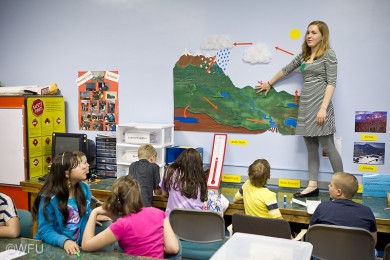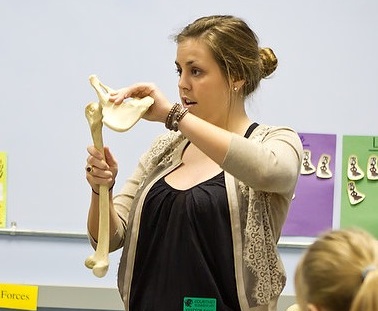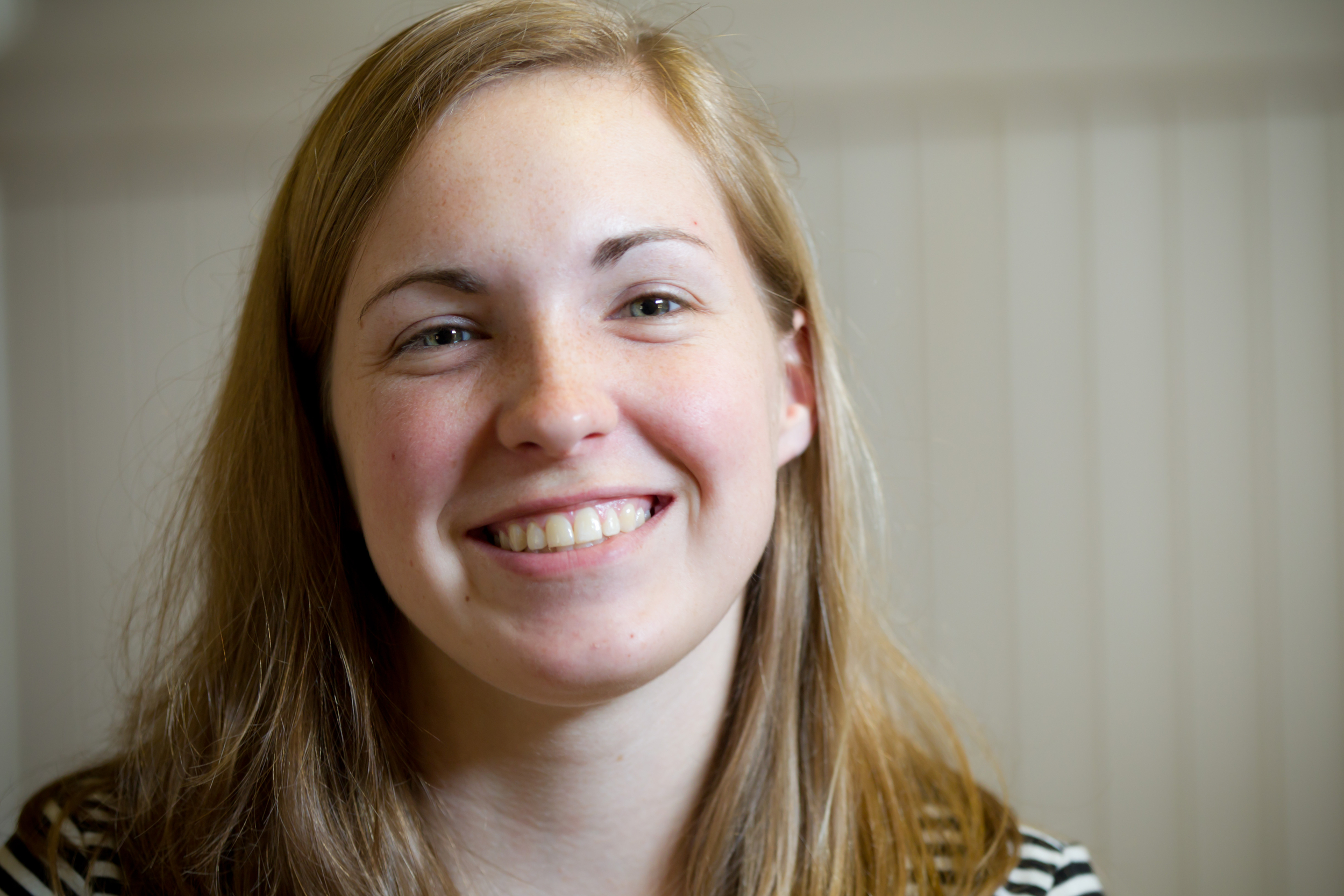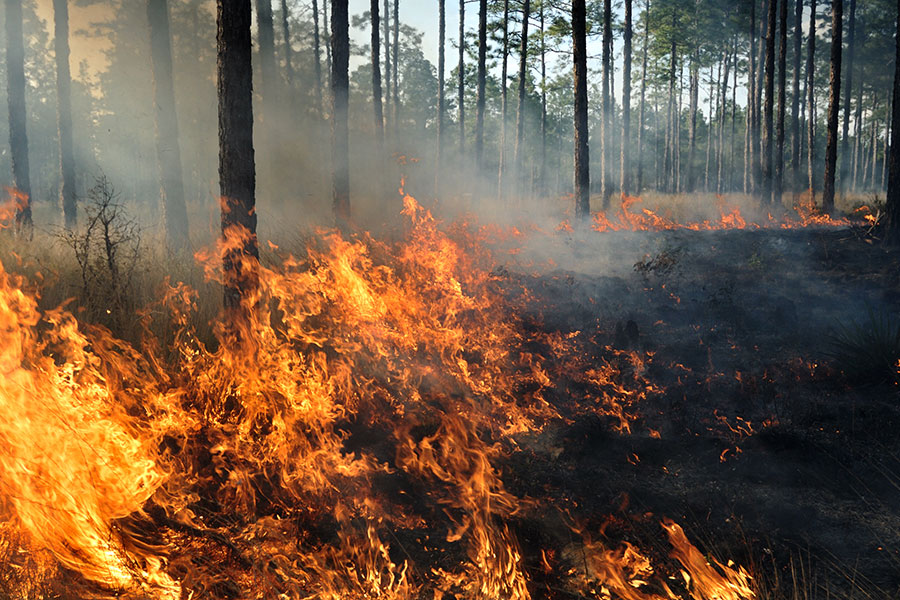Science synchronicity
On a table in a classroom in rural Yadkin County, a spotted salamander named Deac looks out of a small aquarium at a group of fifth graders. The students at Courtney Elementary named the black-and-gold lizard after Wake Forest’s mascot when six elementary education students from the University started visiting their school to teach science.
The Wake Forest students and their professor, Michelle Klosterman, have partnered with the school to put hands-on science back into the school day in creative ways.
“We need to get children to explore and explain through observation,” said Klosterman, who supervises student teachers and studies how to use popular media resources to teach science. “With the focus on reading and math in the early grades, it can be nearly impossible for teachers to find time in the school day to develop and teach innovative, engaging science lessons.”
The Wake Forest students are bridging the gap by developing and teaching lessons focused on the Amazon Rain Forest tailored to each grade level and designed to meet required objectives in the North Carolina curriculum.
“Science is one of the most important subjects in terms of getting students to think critically,” said Michaela Rogers, a senior from Maryland who used hands-on activities to teach students about clouds and the water cycle.
Courtney’s principal Diana Jones and teacher Karen Joyner recently created a separate, dedicated classroom where children in pre-K through fifth grade can learn science. By sharing ideas and modeling lessons, Rogers and other students are helping teachers make the most of the new space.
Wake Forest students coming to teach lessons, gets students “more excited about science,” Joyner said. “Teachers get ideas about how to use the science lab and can build on the lessons.”
Many of the Wake Forest students are using resources — including photographs, video and access to scientists in the field — from Amazon Aid, a nonprofit organization founded by Wake Forest graduate Sarah DuPont. Some of the Courtney teachers are carrying that theme into their classrooms. For example, the pre-K classroom has an Amazon corner with hands-on activities and materials related to the Amazon.
Nancy Davidson, a senior from Randleman, N.C., taught third graders how the structure of plants relates to human bones. In one lesson, students compared the trunk of a Kapok tree with the human spine and discussed how both provide support and stability. In a lesson with fourth graders, senior Lauren Krahnert of Pinehurst, N.C., focused on rocks and minerals and her students explored the effects of mining for gold in the Amazon on wildlife, trees and water.
The lessons created by the six students will be posted on the Amazon Aid website as resources for other teachers. Klosterman’s students will also submit an article on the project to “Science and Children,” a peer-reviewed journal published by the National Science Teachers’ Association.
This project builds on science-related work Wake Forest did with Courtney Elementary last summer and in the fall to create outdoor classroom space, construct raised garden beds, develop a planting guide for teachers and install a rain barrel.
“Since there is a very limited amount of time during a school day, concise lessons are crucial, and if planned correctly, can introduce science to students in a very tangible way,” Rogers said. She was pleased when her students could go beyond a basic understanding of the water cycle to answer tougher questions about deforestation and its possible effects on the plants and animals in the cloud forest.
Categories: Community Impact, Experiential Learning, University Announcements
Media Contact
Wake Forest News
media@wfu.edu
336.758.5237






